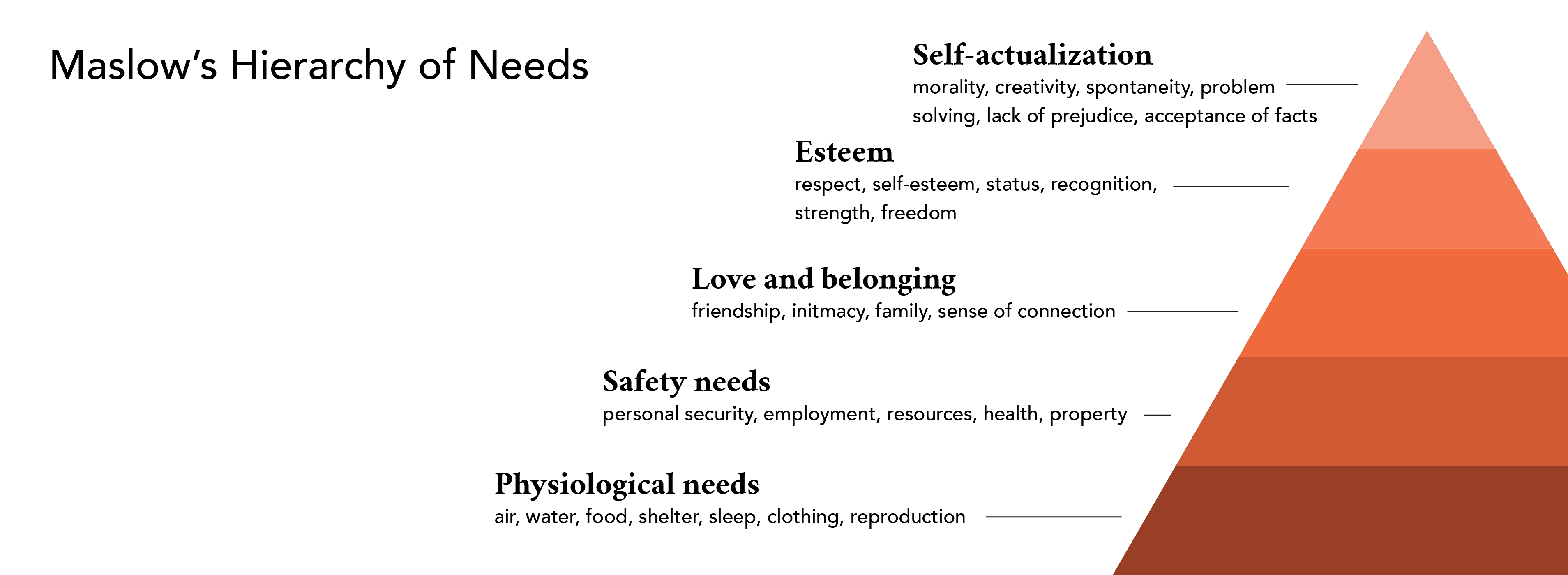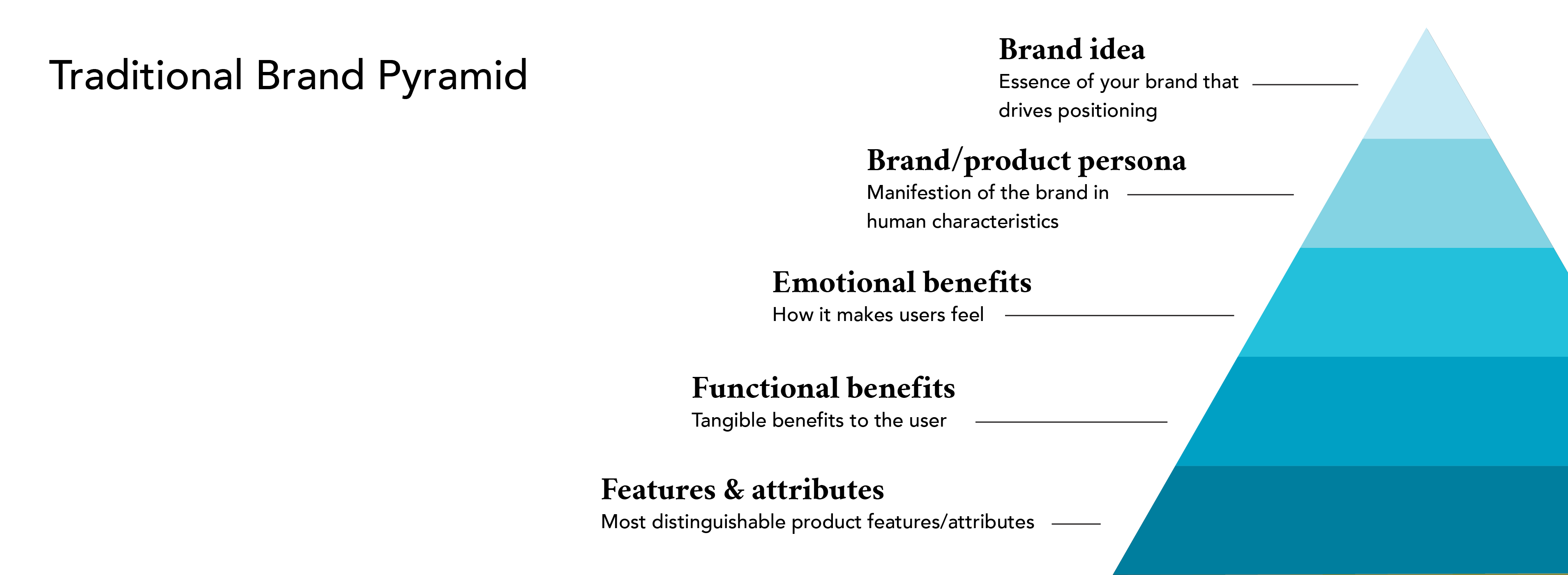Organizing, prioritizing and streamlining a brand’s or company’s messaging can be a difficult task. There are always competing opinions within any organization to establish which is the most important message to communicate. On top of that, the tendency is to pack in everything but the kitchen sink, which dilutes the power of any one message.
Having tools can help facilitate this process, and the good news is there are many to choose from. In the case of distilling a company’s core message, The Brand Pyramid is a helpful one to use. Its superpower is stripping away additive or extraneous brand attributes to create a linear, clear and compelling message.
Good Brand pyramids establish an interesting insight about a core customer need at its base, which ladders up to how an interaction with the brand can make that customer feel.
How it started
To understand the thinking behind the Brand Pyramid we have to reference that Psychology 101 textbook you may still have up in the attic. In it you will likely find a chapter on Maslow’s Hierarchy of Needs. In 1943, Abraham Maslow constructed a theory on how human motivation progresses. The theory holds that motivations increase as a person advances through a series of stages, that start at a broad level of fundamental needs (ie; food, shelter, etc.) and ladders up through increasingly emotional stages (ie; love, community, belonging) to a narrower top level of self-actualization. While these layers overlap somewhat, a person achieves an internal sensation as they reach each stage until finally achieving self-fulfillment.

In the mid 1990s, advertising research firm Millward Brown applied Maslow’s theory to marketing – or more specifically branding – and introduced the Brand Pyramid.

Over the years, there have been many mutations and adaptations to the Millward Brown pyramid. At M, we have adapted it to build from a customer need, and to be more applicable in the age of digital marketing.
An adaptation for the Digital Age
Our pyramid rests on the foundation of an insight into a customer need. Next are the features and attributes of the brand that are relevant to that customer need. On top of that is an expression of the differentiating benefit the brand can offer the customer, as well as the brand’s personality.

As we reach the top of our pyramid, we take a small, but very significant departure from traditional brand pyramids. A typical pyramid might ladder up to a brand essence, a unique selling proposition or a single-minded message. These, however, are a vestige of a time when we pushed our messaging out in an analog world. Digital platforms enable a dialogue in the marketplace, and to the extent possible, a brand would like to control, or at a minimum, steer that dialogue. At the top of our pyramid we define the conversation we would like to have with our customers and prospects and also assert our point-of-view.
Of course, both of these need to be calibrated carefully so that the conversation is compelling and the point of view communicates the brand’s value proposition.
In addition, the added plus of the brand pyramid (but one that requires discipline to be effective) is that it is multifaceted. You can have as many sides as you have target audiences. With clarity of thought and purpose, these will all work together to harmoniously ladder up to the uppermost level of the brand’s point of view.
A successful brand pyramid should reveal a strategically sound, clear, and highly compelling story for the brand to bring to market.
Armed with this tool, the creative team will have ample strategic firepower to work with. Next time you have a messaging challenge, give it a go. We think you will find it a useful exercise and a powerfully multi-dimensional strategic tool to have in your toolkit.
